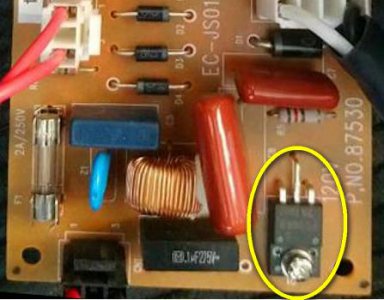Opinion only!!!!!! First job is to seperate the Electrical and the Electronics. The two are distinctly different areas of knowledge and not to be confused one with the other.
The motor is a generic sewing machine motor,
series universal, with only two wires. What that indicates, to me, is that the
motor is not reversable without an internal modification. The wires for the brush rigging and the stator must seperate at some point, leaving four (4) conductors to the outside. This applies whether it is run on AC or DC. The bottom line here is that the
motor is not reversable as it is.
It can be connected either AC directly, or through a rectifier to get DC. Using AC, the speed is regulated with a reostat, like a pot but only two leads and heavier, stouter, and more expensive. I have a couple rigged to my Dremel and other electric drills where I can use my foot while my hands are busy. Or by using a triac to chop up the sine wave. Just like a light dimmer but rated for higher current.
Using DC, there are two (2) methods of control. The first using voltage control to control speed, with lower starting torque. The other using Pulse Width Modulation, to me the preferable of the two. PWM applies full line voltage (and current) in pulses, the width of the pulse controlling how much
net power is applied.
Looking at your controller board at first glance, I am betting on a voltage controller. That's not to say for sure, just my first glance opinion. For use on a machine tool such as you indicated, my first instinct would be to find a different motor. A DC motor with a permanant magnet field would be best as it only uses two conductors. With a four wire motor, it would be
preferable (highly) to reverse the armature, leaving the field the same polarity. This from the "old school" electric shop, not a hard and fast rule.
The main issue is that you do not need to use line (120) voltage equipment. An automotive window motor is reversable, albeit a bit large for your application. The important point is to have all external electrical equipment the same voltage so you can use a single power supply.
This doesn't answer your question directly, but with all the input you've been receiving it will give rise to some thought, if nothing else.
Bill Hudson
.


